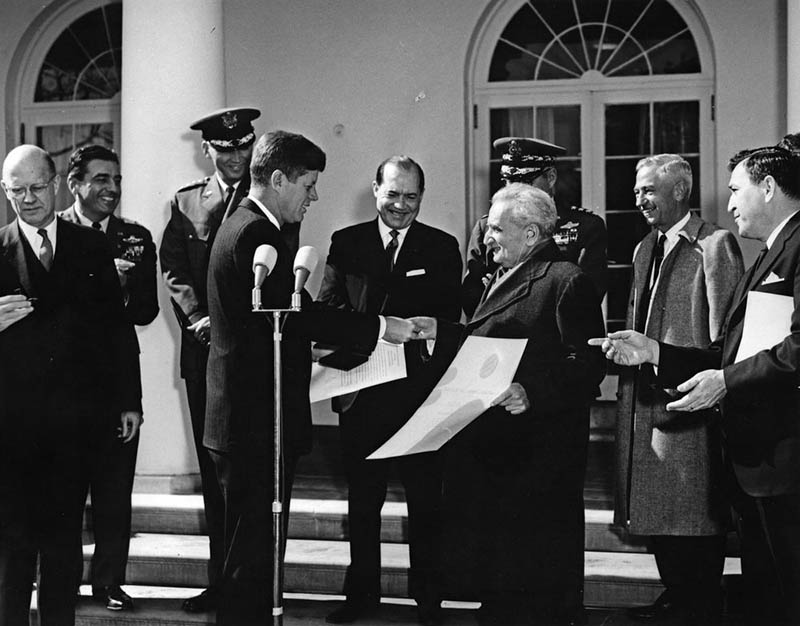Title image is Scandinavia at night. Astronauts aboard the International Space Station took this image of southern Scandinavia just before midnight under a full moon. It shows a green aurora to the north. Image credit: NASA
Where is space? Well, up, of course. But, how far? Well, that’s where the answers start to vary. A lawyer will simply tell you there is no definition, and the US have been keen to avoid defining one. You might think that we engineers and scientists have an agreed technical definition. And we do. It’s definitely 100km. But it might be 80km. Or, maybe some other number if you use imperial units.
So, can we try to define where space is? In aeronautics, the presence of an atmosphere is critical. In astronautics its absence is critical. So, the great Hungarian engineer and physicist, Theodore von Kármán believed a clear distinction could and should be made, and so in the early 1950’s, with his co-workers, he undertook the task of defining the respective terms.
As altitude increases the air gets thinner, that is, atmospheric density decreases.
If we now consider the flight of an aeroplane, this flight is controlled by interaction with air. That is, by the aerodynamic force of lift. For an aeroplane to maintain steady level flight, controlled by aerodynamic forces, its speed must increase as altitude increases, because the air is getting thinner.
At some point the required speed will become faster than the speed required to orbit the Earth and aerodynamic forces are no longer required to maintain flight. The opposite is true for astronautics.
In 1956, von Kármán and his co-workers determined that this transition would occur at an altitude of 83.6km, and set this as the altitude limit that a plane could fly to.

A few years later, around 1960, the Fédération Aéronautique Internationale, FAI, adopted this logic to define spaceflight as above 100km altitude. Presumably, 100km was simply an easier number to work with.
The FAI, who administrate aeronautics records, then created a new category of “flying machine” named a “spacecraft”, which would have separate records to aircraft. Section 8 of the FAI Sporting Code defines the nominal boundary to space as the von Kármán ellipsoid, a curve, above the surface of the Earth at 100km altitude. Often simply called the Kármán line.
A spacecraft is a vehicle or vessel designed to operate beyond the von Kármán ellipsoid. By extension of this definition, crafts such as rovers, landers and atmospheric probes are also termed spacecraft. Note that the plural of spacecraft is spacecraft.
However, not everyone uses this definition of space. In the US, the limit is set as 50 miles (80.5km), the altitude required to gain Astronaut Wings, correctly the United States Astronaut Badge. Another convenient number, but one that is much closer to von Kármán’s original calculation. And, work in 2018 using atmospheric density data collected since von Kármán’s original work, concluded that the boundary should perhaps be 80km.
So, yes. The only thing we all agree on is that space is up. The useful legal ambiguity of where space begins makes it difficult to show wrong doing. But as space tourism and commercial spaceflight become more common it is increasingly likely that a legal definition will become desirable, and even required, allowing governments to regulate and, perhaps, tax such activities.
Electronic & Electrical Engineering
Royal College Building
204 George St.
Glasgow G1 1XW